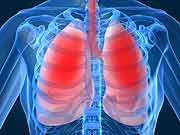Significant drop in forced expiratory volume in one second reported for 17.8 percent of teens
THURSDAY, June 4, 2015 (HealthDay News) — Healthy adolescents may have exercise-induced bronchoconstriction, according to a study published online April 24 in the Annals of the American Thoracic Society.
Alladdin Abosaida, M.D., from the University of California Irvine School of Medicine, and colleagues determined the effect of two exercise protocols on pulmonary function testing in 56 healthy adolescents. The protocols were a constant work rate protocol (to assess for exercise-induced bronchoconstriction, defined by the American Thoracic Society [ATS]) and a progressive ramp protocol.
The researchers found that 10 participants (17.8 percent) had a significant decrease in forced expiratory volume in one second (FEV1). Of those with abnormal lung function (decline from baseline in FEV1 of more than 10 percent), three had decreases after the ATS test only, five after the ramp test only, and two after both tests.
“Healthy adolescents demonstrate subtle bronchoconstriction following exercise,” the authors write. “This exercise-induced bronchoconstriction may be detected in healthy adolescents via constant work rate or the progressive ramp protocol. In a clinical setting, ramp testing warrants consideration in adolescents suspected to have exercise-induced bronchoconstriction who have normal responses to steady state exercise testing.”
Full Text (subscription or payment may be required)
Copyright © 2015 HealthDay. All rights reserved.








